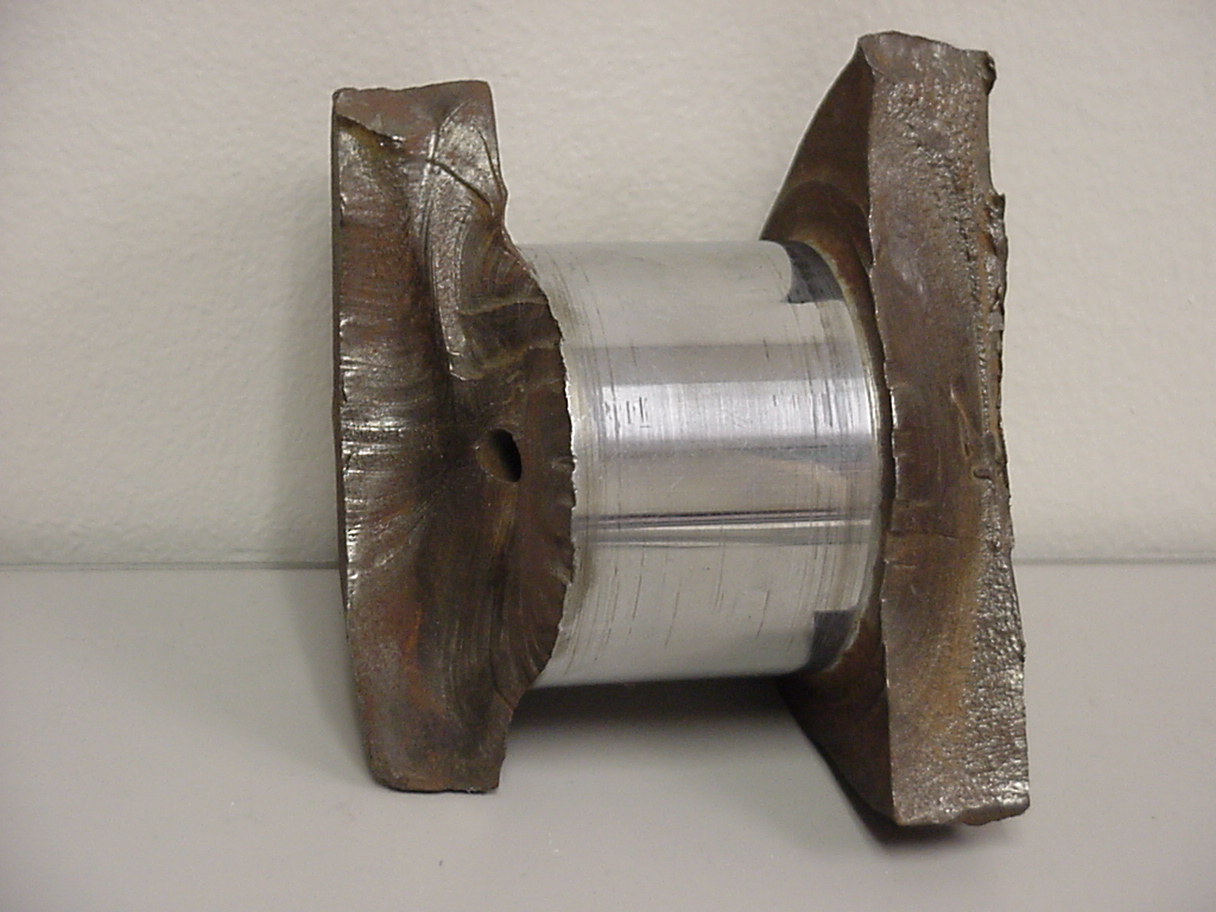Virtual Lab Fatigue Test
Introduction
Close the window to return to the fatigue test
It came as somewhat of a surprise to early engineers in the mid-1800s when railroad axial shafts suddenly fractured. After all, these were made from a ductile material, whose failure was usually associated with yielding. After sustaining considerable cycles of fluctuating loads, they thought the material must have "worn out" or "fatigued". To add to the puzzlement, it was shown that the failed parts were otherwise still as strong and ductile in tension tests as they were originally.
Today, the fatigue failure of structures is well known. Sudden, brittle-like failures of ships, planes, bridges, and mechanical components have all occurred. Figure 7.1.1 shows the failed journal of a crankshaft.

Figure 7.1.1. Fatigue failure of a crankshaft journal.
A recent and serious example of fatigue failure occurred on April 28, 1998, when a 19-year-old Aloha Airlines 737-200 lost an 18 by 21 ft forward fuselage section at 24,000 ft. One person died and 69 were injured. Fatigue cracks around rivet holes were identified as the crack initiation sites.

We now define the phenomenon still known as fatigue by:
The process of crack initiation and growth in a material subjected to conditions of cyclic stresses and strains, which may culminate in complete fracture after a sufficient number of fluctuations.
There are a number of other interesting features about fatigue, including:
- Fatigue characteristics of a material are not readily deduced from other mechanical properties. They must usually be measured directly.
- There exists considerable scatter in fatigue data; therefore a statistical interpretation of fatigue is necessary.
- Fatigue failures can be grouped into two broad categories:
- High cycle fatigue – elastic deformation, > ~ 103 cycles to failure
- Low cycle fatigue – plastic deformation, < ~ 103 cycles to failure
(We will only consider in this chapter the case of high cycle fatigue.)
Some factors that influence fatigue include:
- Number of loading cyclesN
- Maximum stress in a cycle smax
- Minimum stress in a cycle smin
- Mean stress s m = (s max + s min)/2
- Stress range D s = s max - s min
- Alternating stress amplitude s a = (s max - s min)/2
- Stress ratio R = s min/s max
- Stress concentration Ks
- Residual stress
- Surface finish
- Temperature
- Environment
Configuration
Fatigue failure can occur in any structure or structural element of any configuration. (Special geometric considerations will be considered later.)